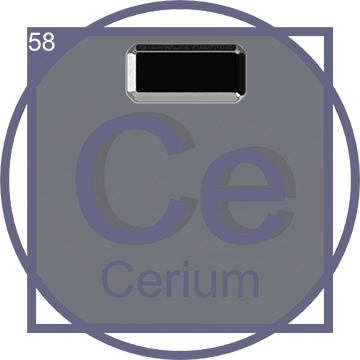Unlocking the Secrets of Samarium: A Journey Through Science and Innovation
Samarium, symbol Sm, is a fascinating element in the lanthanide series of the periodic table, known for its complex electron configuration and significant role in modern technology and medicine. This article explores the discovery of Samarium, its properties, and its versatile applications, shedding light on how this element helps shape our world.
Discovery of Samarium

Samarium was discovered by French chemist Paul Émile Lecoq de Boisbaudran in 1879. The discovery occurred when he isolated the element from the mineral called samarskite, which itself was named after the Russian mining engineer, Vasili Samarsky-Bykhovets. The isolation of Samarium marked a significant advancement in the chemistry of rare earth elements, highlighting the complexity and richness of minerals previously not fully understood.
Position in the Periodic Table
Samarium holds the atomic number 62 in the periodic table, positioned among the lanthanides. It is characterized by its bright silver luster and robust magnetic properties, which are typical of elements in this category. The unique electronic configuration of Samarium contributes to its specific chemical behaviors and its ability to form stable compounds with a variety of other elements.
Pure Samarium in Science

The study of Pure Samarium has profound implications in the fields of chemistry and physics. As a neutron absorber, Pure Samarium is invaluable in nuclear reactors, where it is used to control reaction rates. Its stable isotopes and ability to absorb neutrons without forming long-lived radioactive waste products make it a key player in sustainable nuclear energy strategies. Additionally, Pure Samarium is essential for its unique magnetic properties, which are exploited in various technological applications such as headphones, microphones, and specialized switches. Its role extends beyond simple functionality; research into Pure Samarium helps advance our understanding of rare earth metals' complex magnetic behaviors, contributing significantly to materials science and engineering.
Applications in Technology

Samarium's most notable use is in Samarium-Cobalt magnets, which are among the strongest permanent magnets known. These magnets are crucial in a variety of applications, from electronics to renewable energy systems. They provide the necessary performance in environments that require high temperature stability and resistance to demagnetization. Additionally, these magnets are essential components in the manufacturing of small-scale and large-scale motors, sensors, and in applications where permanent magnetic strength is crucial under extreme operating conditions.

Furthermore, Samarium finds applications in medicine, particularly in cancer treatment. Samarium-153 lexidronam is a radioisotope that helps relieve pain in bone cancer patients by targeting areas affected by cancerous growths. This targeted therapy represents a significant advance in oncology, offering pain relief and quality of life improvements for patients with skeletal metastases. Beyond pain management, research into Samarium's applications is exploring its potential to act directly in treating cancer cells, providing a dual role in both palliative care and active treatment strategies.
How Samarium is Produced
Samarium, like other rare earth elements, is not found in its pure form in nature but is extracted from various minerals, primarily from monazite and bastnaesite. These minerals contain small amounts of all rare earth elements, which are chemically similar and often occur together. The extraction of samarium involves a complex process of crushing the ore, followed by solvent extraction and ion exchange to separate and purify the samarium.
Samarium Mining and Associated Resources
The primary sources of Samarium are in China, the United States, India, Brazil, and Australia. These countries mine rare earth minerals that yield Samarium alongside other valuable elements such as lanthanum, cerium, and neodymium. The mining of these minerals is critical not only for the extraction of Samarium but also for the numerous other rare earth elements that are vital to modern technology.
Current Uses of Samarium

In modern applications, Samarium is primarily known for its use in Samarium-Cobalt magnets, which are second only to neodymium magnets in terms of strength. These magnets are essential in a variety of applications such as in motors, turbines, and electronic devices where permanent magnets are required to operate under extreme conditions. Additionally, Samarium is used in the glass and ceramics industry to color glass and stabilize ceramics.
The Future of Samarium

Looking forward, the potential applications of Samarium in technology and science are vast. Researchers are exploring the use of its magnetic properties in the development of more efficient electric vehicles and renewable energy technologies. Additionally, its properties as a neutron absorber may lead to further applications in nuclear reactors and safety systems. As technology evolves, the role of Samarium could expand significantly, impacting everything from green technology to advanced computing.













